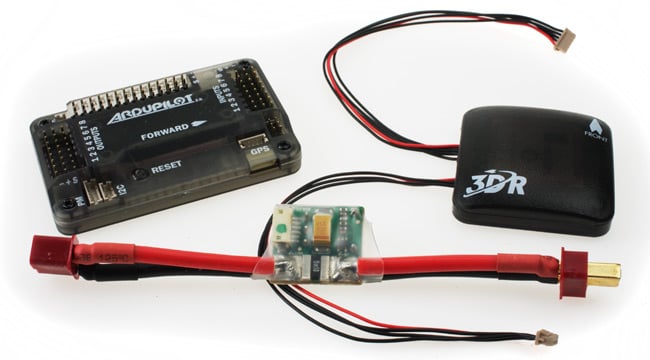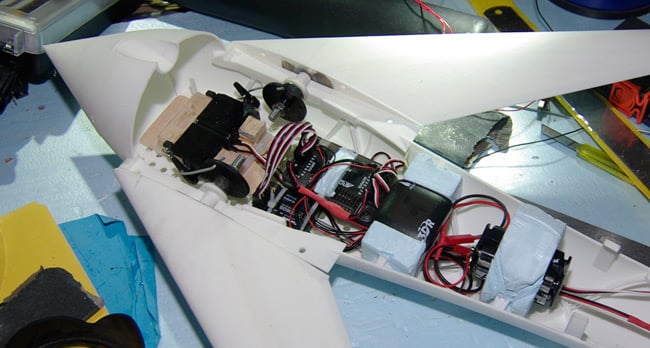Great news from the UK tech news site, The Register, which is conducting an ambitious project to create and launch their own space plane, guided by APM. The latest trial, involving dropping the autonomous glider from a balloon at 30,000m (101,000 ft), worked great.
In some highly encouraging news for the Low Orbit Helium Assisted Navigator (LOHAN) team, a Texan high-flyer recently used the ArduPilot Mega (APM) 2.6 to guide a glider back to base from a heady 30,780m (101,000ft).
Larry Grater's North Texas Near Space 4 (NTNS 4) aircraft hit around 790km/h in an "extended dive" before levelling out at roughly 16,460m, after which it "hit all waypoints and loitered down over the landing location". Larry then took control and landed the plane manually via First Person View (FPV), as the insert later in this video shows:
Tremendous stuff. AS LOHAN fans know, we've got a 3D Robotics APM 2.6 for ourVulture 2 spaceplane...
..and here it is temporarily bodged into the aircraft for servo testing purposes:
Many of you have cautioned that getting the autopilot working properly is a extremely tricky business, especially since we have a supersonic, rocket-powered phase for our mission.
Agreeably, we were recently contacted by ArduPilot (the fixed-wing APM flavour) lead developer Andrew Tridgell - of Samba and Oz UAV Challenge fame - who put us in touch with Larry.


Comments
Very cool!
what did they use for communication?
Sorry about that! Was reading too fast. Fixed..
headline is totally wrong ... that was Larrys plane, the register was just using it as an example
@Hugues
I should have stated in my first post, but I too think this is absolutely amazing! Sort of a first step into open source space exploration.
impressive ! when shall we have ARTF kits to put our own satellites in orbit :)
Oh my word. Excellent work. Congratulations to the drone team and Tridge's team for this achievement.
The Register has not flown their plane yet? The video is of Larry Grater's plane from 101,000 ft.
-
1
-
2
of 2 Next